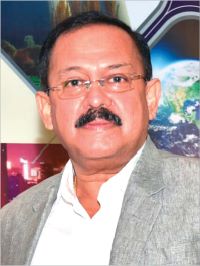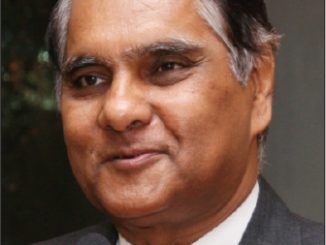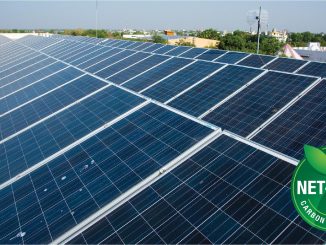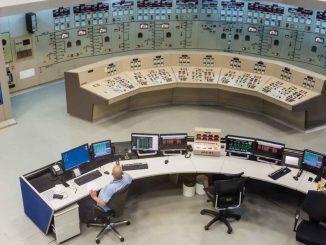
In a recent interview with Power Line, Debasish Banerjee, Managing Director for Distribution, CESC Limited, discusses the company’s digital endeavours, technological advancements, operational achievements and upcoming strategies. Edited excerpts…
What are some of the noteworthy digital initiatives and technological advancements undertaken by CESC in the past few years? What have been the benefits derived?
The power sector is undergoing revolutionary changes, with digitalisation acting as a key enabler to enhance operational efficiency and Customer Experience (CX) at an optimised cost. Our organisation is totally committed to embracing disruptive digitalisation with pioneering initiatives that are reshaping the industry landscape.
We are proud to announce our foray into the next iteration of the internet, Metaverse, a 3-dimensional depiction of our Customer Service facilities in an immersive environment by the use of Virtual Reality (VR) and Augmented Reality (AR), which overlays digital information onto the real world, blending the virtual and physical environments. The services can be accessed from CESC’s website by using general purpose computers and smart mobile phones. Users can also wear VR headsets to enter the virtual world and interact with it using hand controllers or other input devices. CESC is one of the first power utility companies in India to provide Customer Services in Metaverse.
We are also leveraging artificial intelligence (AI)/machine learning (ML)-powered chatbots, WhatsApp bots and voice bot “Aastha” for improved customer service. VID-U (video call centre) is another first-of-a-kind service provided by CESC to its customers. Digital payment penetration is at an all-time high at 82 per cent in revenue, through focused intervention on transforming cash to digital payers.
We are actively exploring the potential of Generative AI to boost productivity, reduce costs and improve response times in customer service. This cutting-edge and disruptive technology holds significant promise in revolutionising various aspects of power distribution including demand forecasting, energy load balancing, grid optimisation and seamless renewable energy integration. Its potential impact on the energy sector is indeed transformative. We have secured the first patent in our distribution domain for building Industrial Internet of Things (IIoT) and Analytics-Based Transformer Health Monitoring System for Predictive Maintenance.
Several other disruptive technologies have also been deployed for maximising network uptimes, such as Self-healing networks, Smart pillar boxes, Drone-based monitoring, Pan tilt motor mounted thermal cameras at outdoor substations and Thermal imaging of transmission and distribution infrastructure. Body-worn cameras have been introduced for remote supervision. We are converting repetitive manual work with AI bots & RPA driven critical processes such as New Connection Applications and customer services management. This will improve our turnaround time and enhance CX while reducing human error, if any, and freeing up resources for more value-added jobs.
CESC remains at the forefront of adopting Immersive technologies, with AR, VR and digital twin providing 3D walkthroughs of substations, digital replicas of field relays and remote visualisation of data and waveforms, enabling decision-making at the edge for the workforce and facilitating faster restoration. A project for trying out business applications Blockchain as a Service (BaaS) related for peer-to-peer power transfer was carried out, along with an assessment of different trading models involving consumers and prosumers, for ensuring reliable supply with a mix of conventional and renewable energy.
We have implemented a state-of-the-art 24×7 Security Operations Centre (SOC) for early detection of cyber threats and attacks along with endpoint detection and response solutions for critical servers backed with the latest global threat intelligence.
“We are proud to announce our foray into the next iteration of the internet, Metaverse, a 3-dimensional depiction of our Customer Service facilities.”
What is CESC doing on the sustainability front?
In alignment with our commitment to Environmental, Social and Governance (ESG) principles, we are actively pursuing a holistic approach, encompassing green energy procurement, clean transportation, microgrid implementations and green buildings, while fostering biodiversity conservation and implementing eco-friendly practices. We have been conducting several social programmes in our areas of operations for upliftment of less privileged sections of society.
Sustainability will be majorly guided by the three pillars of Energy Transition – Grid & Industry Decarbonisation and Transport Transition. The share of electricity in the final energy mix is expected to increase from 18 per cent in 2020 to more than 50 per cent in 2070, as an enabler to Grid Decarbonisation. We are actively fostering and nurturing an ecosystem for eco-friendly technologies such as Electric vehicles (EVs) and Electric cooking. We are also proactively collaborating with government entities to bolster sustainable EV transportation infrastructure, as EVs have zero tail-pipe emissions. Together, we are co-creating the desired electrical network infrastructure for EV charging. Further, we are in the process of transforming our captive transport fleet to EVs.
We undertook a project to establish distribution-scale Battery Energy Storage System (BESS) for energy management. We have also commissioned a Microgrid with a Floating Solar plant and BESS for decentralised and sustainable power generation. Currently, we have eight establishments certified as “Green Buildings”, spanning over 213,000 square feet. This year, we are on track to transform an additional eight substations encompassing 160,000 square feet to green.
We have signed a 250 MW Wind-Solar Hybrid PPA for 25 years. Additionally, we are regularly procuring green power through the Green Term-Ahead Market (GTAM), we have established rooftop solar PV plants at multiple substations and commissioned windmills to cater to the auxiliary consumption of substations. Additionally, we are offering desired assistance to consumers installing rooftop solar at their premises, while increasing the penetration of decentralised and embedded renewable generation. Over a period of time, Solar energy generation has evolved as a matured green energy source and we are in pursuit of the same.
Hard-to-abate sectors like steel, cement, aluminium and fertiliser production are under massive transformation due to their significant carbon emissions, with innovative solutions emerging as game-changers. One such solution is Green Hydrogen (GH2), a versatile energy carrier produced through renewable sources. Its higher energy density and applications in various sectors make it a cornerstone of the decarbonisation agenda. We are pursuing our plans in this clean energy space and will actively participate in this journey of greening the environment.
Carbon Capture, Utilization & Storage (CCUS) technologies have also gained prominence. These techniques involve capturing CO2 emissions at their source and repurposing them or safely storing them underground for future use. This approach is pivotal, especially for industries with limited alternatives to reduce emissions substantially.
The rise of Green Ammonia adds another layer to this transformative journey. It serves as an energy- dense carrier for hydrogen, offering applications in power generation and energy storage. Additionally, it acts as a sustainable fertiliser, addressing agricultural needs without further straining the environment. In the realm of transportation, Ethanol emerges as a cleaner alternative. It can be used as a fuel additive, significantly reducing reliance on imported oil and enhancing energy security. Ethanol- powered vehicles contribute to cleaner air and lower greenhouse gas emissions, marking a step towards sustainable mobility.
We are actively contributing to biodiversity conservation through the plantation of medicinal plants at substations, a butterfly garden at Haldia and Budge-Budge Generating Stations and the creation of urban forests using the Miyawaki technique.
“We have secured the first patent in our distribution domain for building Industrial Internet of Things (IIoT) and Analy tics-Based Transformer Health Monitoring System for Predictive Maintenance.”
What are CESC’s recent operational highlights in the distribution segment? What are your top priorities and plans for the next one to two years?
We have sustained business growth for decades and effectively overcome recent challenges such as the Covid-19 pandemic and climatic disasters, emerging as a more resilient and agile organisation. We provide quality and reliable power supply to our 3.6 million consumers, with the total energy requirement increasing to 11,175 MUs in 2022-23. Our system has successfully handled an all-time high of 2,606 MW peak demand during the unprecedented heatwave this summer.
We have been able to sustain our year-on-year reductions in Transmission and Distribution losses, even on a very low base, by leveraging technology-oriented sustainable solutions such as Co-Axial Cables, Theft-Proof Pillar Boxes and Automated Remote Surveillance Cum Theft Prevention System built with Smart Meter technology. CESC has achieved a high degree of automation through its investments in technology and equipment, resulting in faster restorations in the event of any supply interruptions.
Over the past decade, we have invested heavily in power generation and distribution assets. Robust planning and proactive measures have enabled us to tackle crises such as the Covid-19 pandemic and the super cyclone, ‘Amphan’, in May 2020. Our network and team resilience have set a global benchmark. This commitment persisted even during the ‘Yaas’ cyclone in May 2021. Our Special Protection Scheme is embedded with “islanding” features to ensure uninterrupted power supply.
We have been awarded with IEEE Milestone by the Institute of Electrical and Electronics Engineers (IEEE), the first ever awarded to any Indian utility, for heralding the era of electricity in the Indian subcontinent.
What is the overall outlook for the power sector in the near to medium term?
In the near to medium term, the outlook for the power sector involves solving “The Energy Trilemma”, which is a delicate balancing act between energy security, affordability and the imperative for a sustainable energy transition. This complex challenge requires careful planning and the implementation of strategic solutions guided by the principles of decarbonisation, decentralisation and digitalisation. Decarbonisation will result from an accelerated addition of renewable capacity in India’s energy mix. The thermal fleet will now support peak demand needs. Further, energy storage systems will play a vital role in the future in tackling the intermittency of renewable energy resources, provided that the cost of the storage becomes economical.
In the near to medium term, the power sector’s outlook is marked by decentralisation as a solution to partially solve the time and location challenges of grid-scale renewable energy. It will optimise resource utilisation, minimise grid investment and promote renewable adoption, particularly through rooftop solar and microgrids. Virtual Power Plants will play a pivotal role in this transformation by aggregating diverse distributed energy resources into a unified network, functioning as a single power plant, offering grid stability, demand response, renewable integration, energy trading, grid support and promoting efficient decentralised power distribution, all in line with India’s mission to achieve net zero by 2070.
Digitalisation will be the catalyst for facilitating smooth energy transition, focusing on improvements in efficiencies and reduction in costs through enhanced visibility of energy systems. Digital technologies such as energy efficiency solutions, smart homes, smart meters, IT/OT systems, AI/ML and IoT will be increasingly adopted. Increased utility participation in diversifying revenue streams through Non-Tariff Revenue (NTR) and behind-the-meter (BTM) strategies is crucial for the distribution sector. Forward-looking approaches, such as asset monetisation, infrastructure sharing, EV charging stations and services at consumer premises could ensure additional revenue streams.
Market coupling is another excellent mechanism to integrate multiple power markets into a single unit. Such a concept worked wonders in integrating relatively small power markets of different countries, allowing power to flow from one end of the country to the other end of a different country. The situation in India may be slightly different, with the majority of the power flow being made through long-term PPAs and bilateral contracts, with only a small portion being catered to by power exchanges. Given the small short-term market volume transactions through the Power exchange as compared to capacities locked in long-term contracts, such a “market coupler” may need further in-depth evaluation.
The market-based economic dispatch (MBED) concept has been introduced, emphasising the principles of “one nation, one grid, and one tariff”. MBED aims to reduce power procurement costs for Discoms by implementing a national-level merit order dispatch system.
The positive fast-evolving policy and regulatory landscape is poised to foster an enabling environment for the power sector. Various other forward-looking, value creating policies have already been announced and several are in the pipeline and we all are geared towards addressing the challenges posed by the “Trilemma”.
In the realm of energy distribution, we are witnessing a pivotal transformation as distribution utilities increasingly embrace Smart Energy principles, which are characterised by real-time monitoring, automatic demand response programmes, grid automation and predictive maintenance, thus revolutionising the domain.
The world is facing a daunting challenge caused by the increasing frequency of heat waves and humidity due to climate change. These changes are driving a significant surge in daytime and night time peak demand. In response, utilities need to embrace smart demand response programmes such as time-of-use pricing, critical peak pricing, automated load control and targeted energy efficiency programmes, thus encouraging energy consumption shifts from peak hours to non-peak hours and thereby minimising the need for extensive infrastructure investments, which will be utilised only for a few hours in a day, while ensuring grid reliability amid changing climate conditions.
“Sustainability will be majorly guided by the three pillars of Energy Transition – Grid & Industry Decarbonisation and Transport Transition.”



